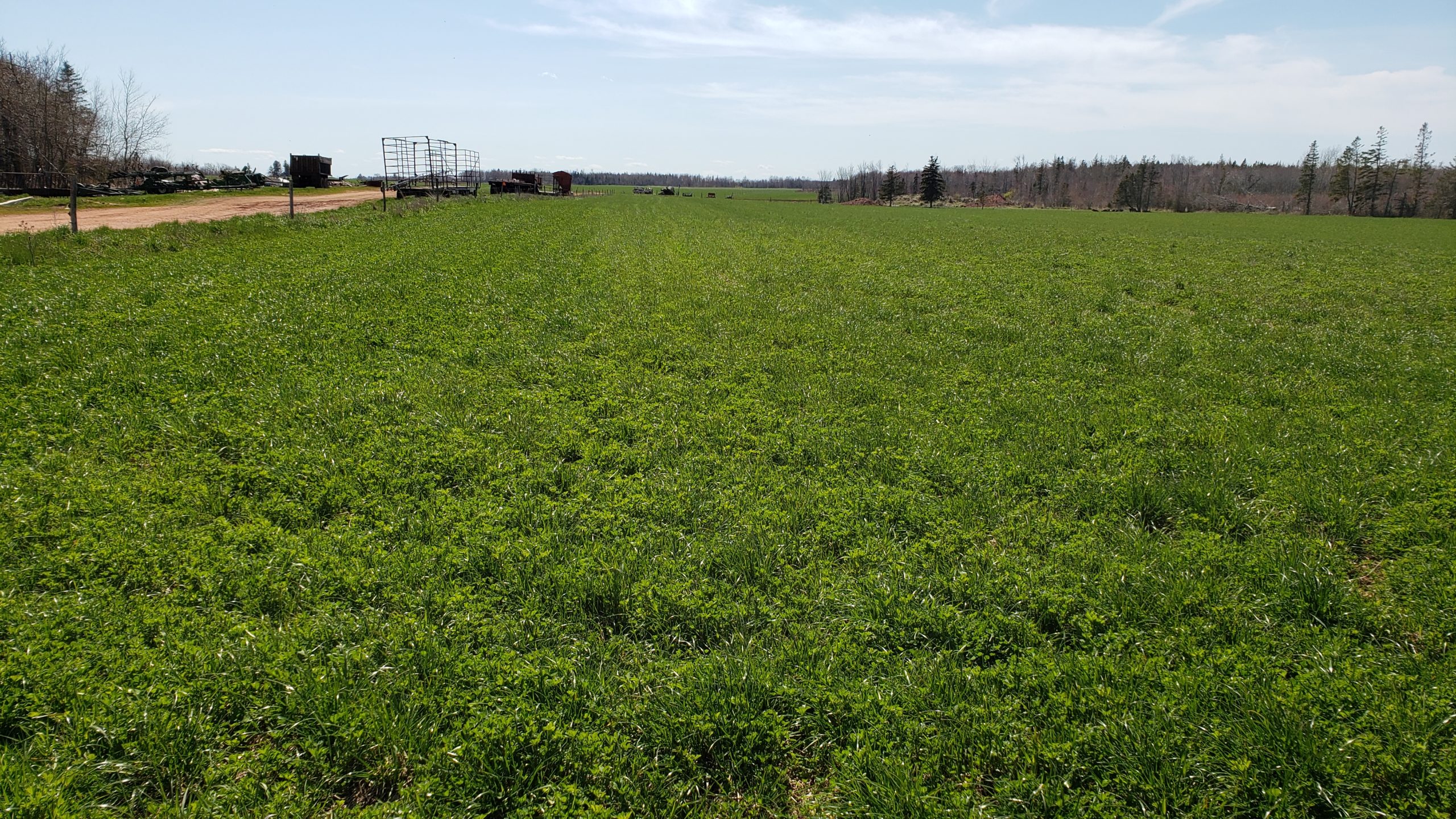
28 May Agronomy Update – May 28
Hi everyone,
It sounds like most farms are making rapid progress on planting this week, despite some rainfall here and there. From the folks we’ve been talking to, it sounds like we should be close to or at 50% of acres planted by the end of today. The forecast looks good until Monday, so I would imagine a pile of spuds get planted over the weekend. Soil conditions are very good for planting…soil temps have improved a lot, there is sufficient moisture without getting too sticky. There are a few fields where growers have told me that it’s just barely fit for planting…mostly heavier soils, longer rotation fields.
Some rainfall totals from the past 7 days (since last Friday, Weather Underground):
Elmsdale: 14 mm
West Cape: 21 mm
Wilmot Valley: 38 mm
Malpeque: 28 mm
Meadowbank: 29 mm
Mount Stewart: 21 mm
Flat River: 24 mm
Rollo Bay: 35 mm
Late Blight Spore Trapping:
For the 2021, the Board is looking at doing an evaluation of the Spornado late blight spore trapping program. Our plan is to have a series of sampling fields evenly spaced across the province as an “early-warning” system for late blight spores. I will be looking for some growers who would be interested in providing us with a field to install a sampling cone and to collect the sample cartridge once a week and take it to the nearest Access PEI in order for us to collect the samples and send them off to the lab in Ontario. Please contact me if interested or would like additional details.
2021 Potato Pest Control Guide:
The Department of Agriculture & Land has published the updated 2021 Potato Pest Control Guide, and there are a bunch of new products available to producers this year as well as label changes on some existing products. Make sure you are up to date on your options, application rates, etc.
Something to keep in mind: if you are changing your row width (ie. moving from 36 inch to 34 inch row spacing) you will need to adjust your application rate for in-furrow pesticides and fertilizers. Talk to your agronomist or supplier to ensure you’re applying the right rate.
SpudChat: Grower Check-In
Episode #6 of SpudChat went up on Wednesday, and this week we are doing a “Grower Check-In” with three farms across the province to see how planting is going and hear what’s new this year. Thanks to Jonathan MacLennan, Brandon MacPhail and Becky Townshend for agreeing to chat with me for this. You can listen to this episode at https://spudchat.buzzsprout.com/ or wherever you get your podcasts. My plan is to do one of these Grower Check-In episodes once a month during the growing season.
Thinking About Forage Crops:
While it hasn’t been ideal weather to get potatoes planted, the forage crops are really starting to jump, especially with a little warm in recent days. I’ve already seen some first cut silage knocked down on a couple of dairy farms!
If you grow a legume/grass forage crop in your potato rotation and you don’t already have it committed to a dairy or beef producer, it might be worth investigating the value in selling at least one cut of forage.
As we’ve discussed at a lot of workshops in recent years, the true value of forage crops in rotation comes from their roots. Roots build organic matter and foster beneficial microbes that cycle nutrients and energize your soil. When you mow a forage crop, you are not returning much carbon to the ground…not enough to move the needle by much. Don’t be afraid to harvest at least one crop of forage from fields, particularly if that forage can be traded for manure or can help pay for investment in seed and fertilizer for those fields. A couple things to consider:
- A number of beef and dairy producers got through the past year by dipping into their hay/silage “reserves” and will need to top those back up. There may also be some opportunities to make hay or silage for sale to neighboring provinces which have also been recently short on feed.
- Barrett’s First Law of Agronomics states: Trade hay or straw for manure any day of the week. Manure or compost provides a carbon injection to your fields that is more stable and will break down slower than hay or straw, and also carries more concentrated nutrients.
- Even if you can’t get manure back, there are a lot of scenarios where selling a crop of forage makes sense, particularly if it’s a high quality forage like alfalfa. The key for legume forages is to cut it early to maximize quality, not quantity. This increases the value of that forage, as well as providing lots of time for regrowth and expanding of root mass.
- Do the math on how much forage you are selling and the replacement value of the nutrients contained within it. Alfalfa yields of 3.5 Ton/acre (wet weight) will export around 123 lbs/acre of potash. You need to ensure you are getting enough value to replenish these nutrient exports (along with P, Ca, Mg, etc). There are lots of free nutrient removal calculators available online to refine for your own yield numbers. The same goes for straw, which mostly exports potash (K).
- Both sides need to come ahead. The livestock producer needs quality forage for a price that still provides a profit margin. The potato producer can derive cash flow in the forage year of the rotation that helps with the cost of seed, fertilizer and management of that non-cash crop year. There should be room for both parties to profit.
Have a productive and safe weekend everyone.
Ryan
